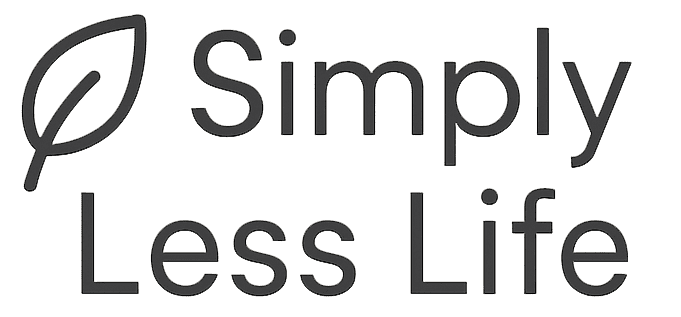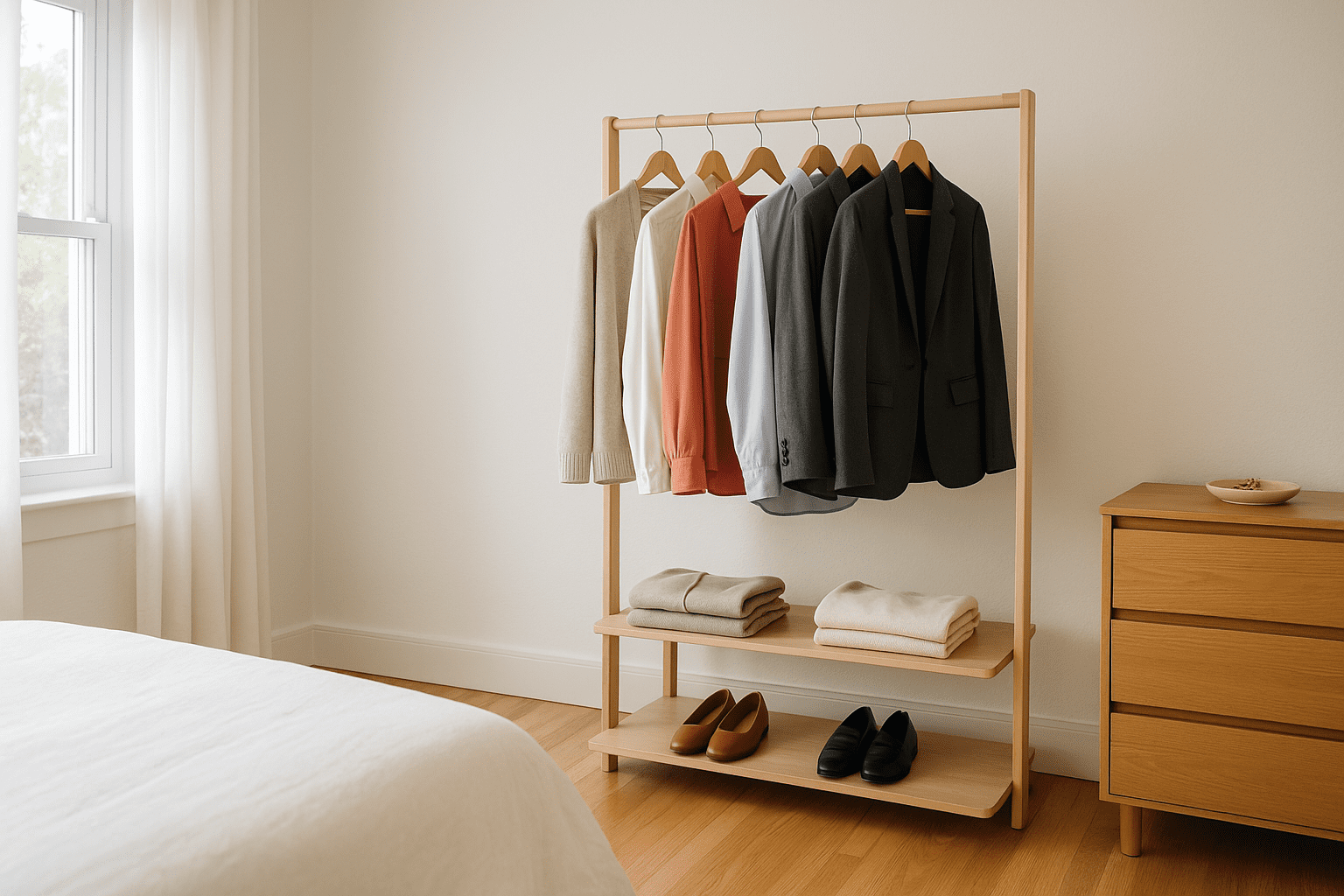Introduction: Why a Minimalist Wardrobe Works for Work
Walk into any clothing store or scroll through your favorite online retailer and you’ll see just how easy it is to get overwhelmed by choices. When it comes to dressing for work, that overwhelm can creep right into your mornings—leaving you standing in front of your closet, feeling stuck before the day even begins. In the modern work environment, where remote, hybrid, and in-person schedules can all blend together, many people find themselves juggling more clothing than they actually need, and yet still feeling like they have nothing to wear.
A minimalist wardrobe offers an answer that’s refreshingly simple. Instead of starting your day sifting through a mountain of options, imagine opening your closet to find only the items that make you feel confident and ready. Fewer choices actually mean more clarity. You spend less time worrying about what to wear, and more time focusing on what really matters—your work, your well-being, and your peace of mind.
It isn’t just about decluttering your closet. It’s about reducing decision fatigue, freeing up mental space, and feeling genuinely at ease with how you present yourself. Many people who embrace a minimalist wardrobe for work report feeling more organized, more relaxed, and even more professional, simply because every piece has a purpose.
In this article, you’ll discover what a work-ready minimalist wardrobe really looks like, how to build it from what you already own, and how to maintain it in a way that fits your lifestyle. You’ll see practical tips, real-world examples, and actionable steps—so whether your job is remote, in the office, or a mix of both, you’ll find ideas that work for you. Let’s start exploring how simplifying your wardrobe can make your work life easier and more rewarding.
Rethinking “Enough”: Defining a Minimalist Work Wardrobe
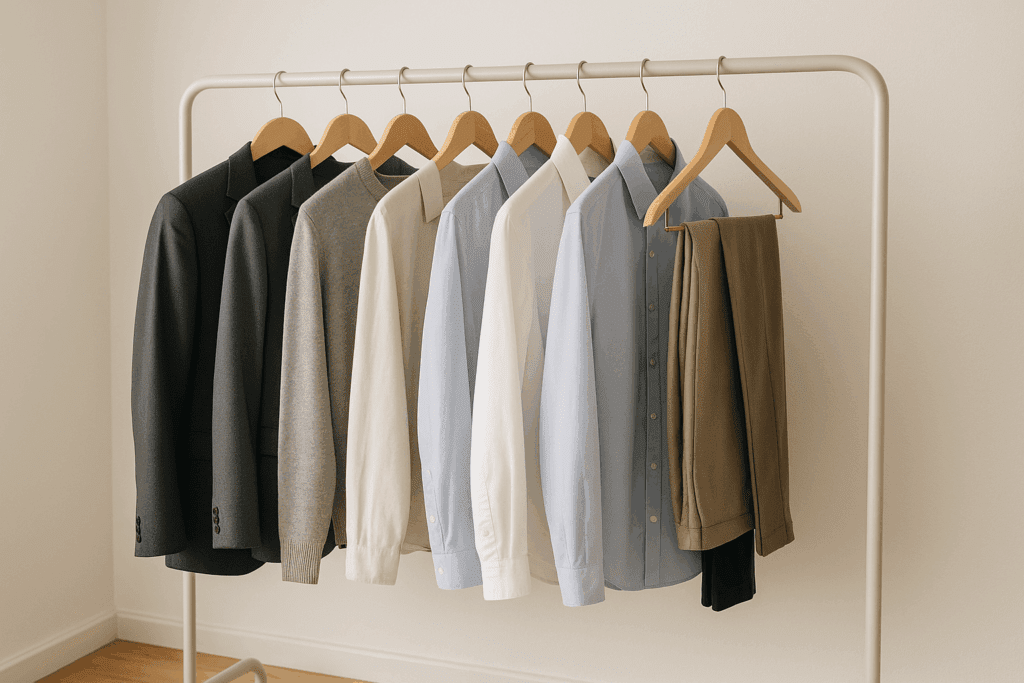
When most people hear the word “minimalist,” they picture an almost empty closet—maybe just a handful of identical shirts or a single pair of shoes. But the truth is, minimalism is much more flexible, and it’s not about owning as little as possible. Instead, it’s about finding your personal version of “enough”—a collection of work clothes that supports your daily life without overwhelming you.
For some, enough might mean having three pairs of work pants, two blazers, and a few interchangeable tops. For others, especially in creative or more casual fields, it might be even fewer pieces, or just a set of comfortable basics that can be layered and accessorized. What matters most is that every item serves a clear purpose and fits your unique work needs, whether that’s a formal corporate office, a casual co-working space, or a dedicated desk at home.
Defining “enough” requires a little self-reflection. Consider your typical week: How many days do you actually need to dress up? Do you attend meetings on camera, or are you mostly working behind the scenes? Is your workplace more formal, or do you have the freedom to dress down? By answering these questions, you can start to see which pieces are essential and which ones are simply taking up space.
Minimalism in a work wardrobe also means being intentional about quality and function. Instead of spreading yourself thin with lots of “just in case” options, focus on pieces that truly work for you—those that are comfortable, appropriate, and make you feel put together. For instance, someone working in finance might need a rotation of crisp button-down shirts and tailored pants, while a teacher might prioritize easy-to-care-for fabrics and smart-casual layers.
It’s also important to remember that a minimalist wardrobe is personal. There’s no universal formula. Your “enough” is defined by your job, your climate, and your own comfort. As you read on, keep in mind that the goal isn’t to follow a rigid set of rules, but to create a work wardrobe that fits your life—leaving you with the space and confidence to focus on what matters most.
Read More..
- Beginner Minimalist? Here’s How Simplifying My Life Changed EverythingWhat Being a Beginner Minimalist Really Means Becoming a beginner minimalist isn’t about tossing all your belongings or living out of a suitcase. It’s about…
- 7 Life-Changing Truths About Minimalist Living That Gave Me My Life BackMinimalist Living: The Turning Point That Sparked It All For years, life felt like a constant race against clutter—both in my home and in my…
- 7 Tips : Minimalist Furniture, Maximum Peace: How a Clutter-Free Living Room Changed EverythingWhy a Minimalist Furniture Living Room Is More Than Just a Design Choice When someone first hears “minimalist furniture living room,” they might picture a…
Assessing Your Current Closet: The Starting Point
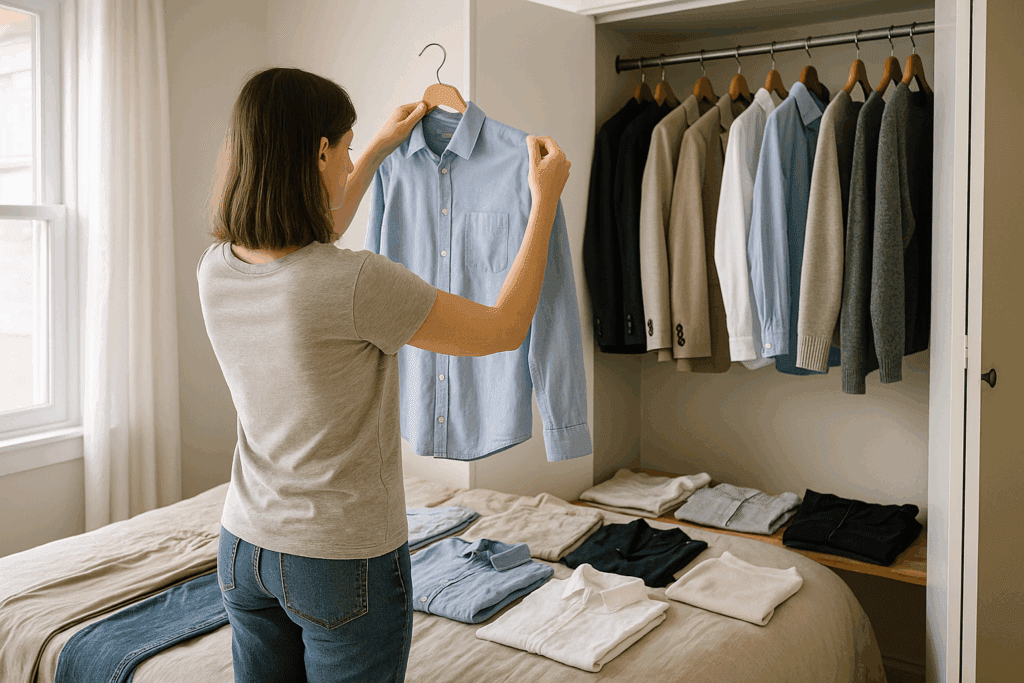
Before you start buying or donating anything, the best way to build a truly functional minimalist work wardrobe is to get real about what you already own. Most people’s closets are full of “maybes”—shirts that looked good on the hanger, pants that don’t quite fit, shoes you wore once and forgot about. It’s easy to lose track of what actually serves you and what just takes up space.
The first step is simple: take everything out. Spread your workwear on your bed or a clean surface and look at each piece with fresh eyes. Which items do you reach for without thinking on busy mornings? Which ones have you avoided for months? This isn’t just about tossing out what you don’t wear, but about noticing patterns in what makes you feel comfortable, confident, and ready for work.
Many people are surprised to find that they rotate the same few items week after week, while the rest go untouched. If you’ve ever grabbed your “favorite shirt” three times in a single week, that’s a clue: certain clothes make you feel like yourself, and the rest are just noise. As you assess, pay attention to fabrics, fits, and colors that actually work for your job and your body.
There’s no need to feel guilty about letting go of expensive pieces that never really worked, or holding onto “just in case” items you haven’t worn in years. Minimalism is about the present, not the past. If you find something that no longer fits your needs or your style, consider donating it so it can serve someone else.
For example, take Jamie, a project manager who thought she needed two full closets of clothes for her hybrid job. After pulling everything out and keeping only what she loved to wear, she realized her everyday work rotation fit comfortably on a single rail. The extra space in her closet made her mornings easier and her laundry pile smaller.
Taking this first step will help you see the real building blocks of your minimalist wardrobe. It’s a process that might take a little time, but it’s worth every minute for the clarity and calm you gain in your daily routine.
Building the Foundation: Choosing Essential Workwear
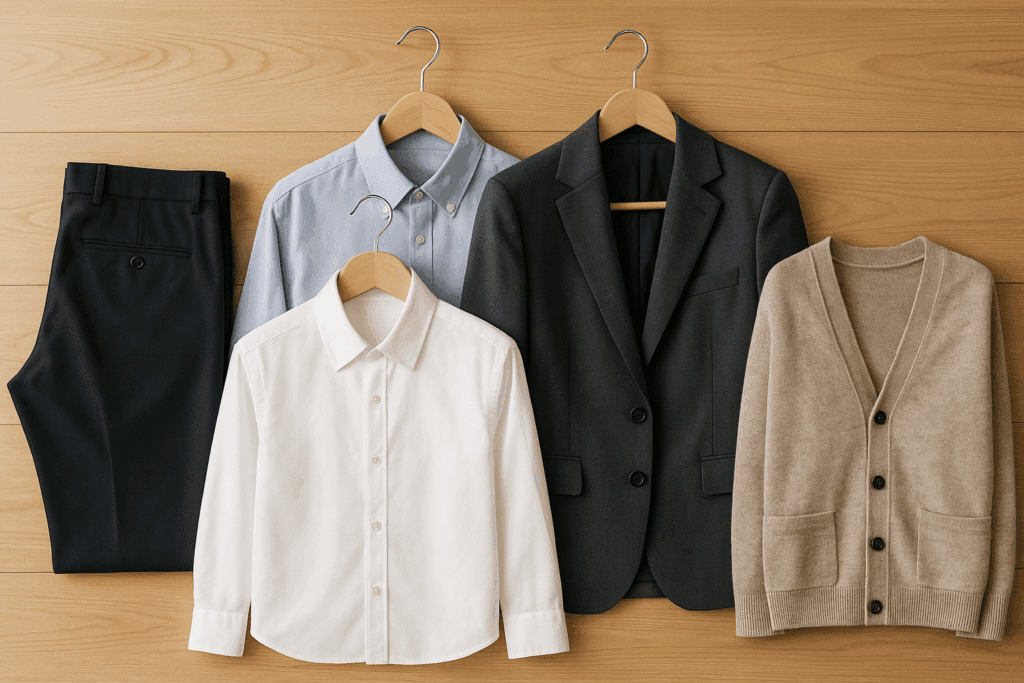
Once you’ve pared your closet down to what you actually use, it’s time to focus on building the core of your minimalist work wardrobe—the pieces that form the foundation for every outfit you’ll wear to work. The goal isn’t to chase a perfect capsule or copy someone else’s list, but to thoughtfully choose items that make getting ready feel easy, professional, and authentic to you.
Start by identifying what makes a garment “essential.” For work, essentials are those pieces you reach for over and over because they fit well, feel comfortable, and work in most situations you encounter at your job. They’re the pants that never let you down, the shirt that looks good on camera, the sweater you rely on when the office gets chilly. Instead of accumulating more, you’re intentionally narrowing down to what serves you best.
Quality is key here. It’s worth investing in workwear basics that are durable, comfortable, and easy to care for. That doesn’t mean spending a fortune—plenty of affordable brands offer well-made items—but it does mean being choosy. For example, look for wrinkle-resistant fabrics if you travel often, or sturdy cotton if you want something that will last. Notice which materials and fits you already favor, and seek out similar pieces.
Versatility is another cornerstone. The best workwear basics can be mixed and matched in dozens of ways, creating enough variety to keep you feeling fresh without owning a mountain of clothes. A well-fitting pair of black or navy pants can be worn with almost any shirt or blazer. Neutral-colored tops and classic blazers go with everything, and a couple of subtle accessories can take you from a casual team meeting to a formal presentation without stress.
Avoid the common pitfall of buying “just in case.” Stick to what you need for your current role and actual work life. For instance, if you haven’t worn a suit jacket in two years, you probably don’t need three of them. Instead, curate a foundation you can build on as your career and circumstances change.
Consider Anna, a software developer who commutes to an office three days a week. She built her minimalist work wardrobe around two pairs of pants, three comfortable tops, one blazer, and a versatile cardigan. With just these items, she always looks put together and never spends more than a minute deciding what to wear.
When you choose essentials thoughtfully, you make mornings easier, cut down on laundry, and set yourself up to feel more comfortable and confident at work—every single day.
Curating by Season and Situation
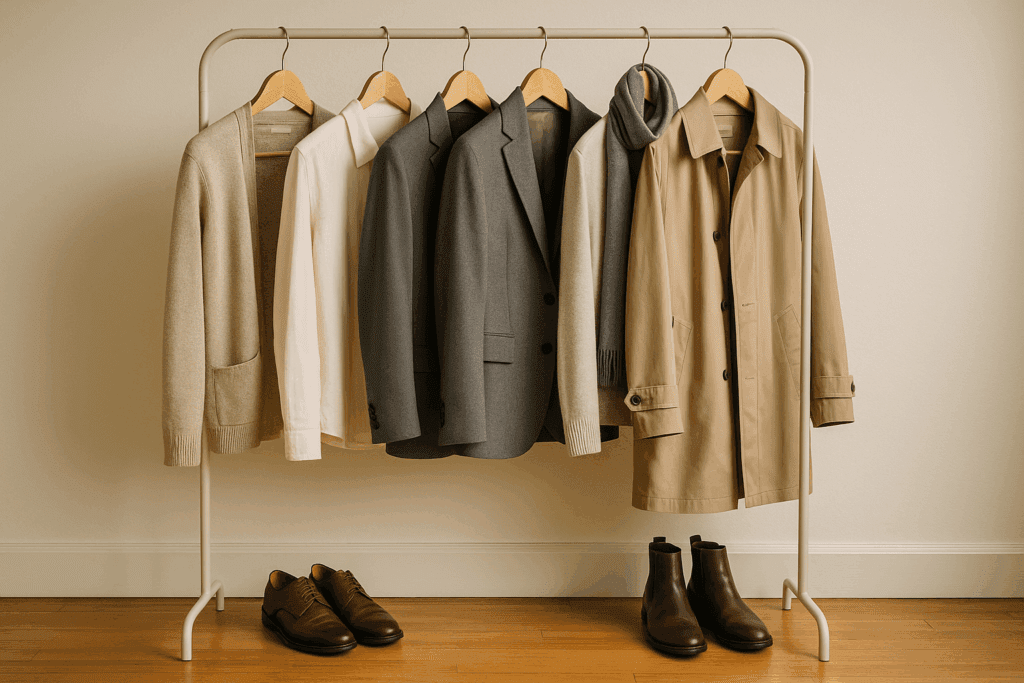
A minimalist work wardrobe isn’t just about trimming down your clothes to the bare minimum—it’s about making sure what you keep actually works for you year-round. The best minimalist wardrobes adapt to changing seasons, unexpected weather, and different work situations without becoming overwhelming. This requires a bit of planning, but the payoff is a wardrobe that feels smart, adaptable, and genuinely effortless.
Start by thinking about your local climate. If you live somewhere with hot summers and cold winters, your work wardrobe should transition easily between temperatures. Focus on layering: lightweight shirts and tops can be worn alone in warmer months, then paired with sweaters or blazers as the weather cools. Look for breathable, natural fabrics like cotton or linen for summer, and soft wool or cashmere for winter.
A big part of curating for the season is choosing multi-purpose pieces. A neutral cardigan, for instance, can serve as an extra layer on cool summer mornings or as a key part of your winter look. A simple trench or raincoat can protect your workwear from unexpected showers without cluttering your closet. When selecting outerwear or accessories, pick items that coordinate easily with your basics so you always look put together.
Consider the unique requirements of your workplace, too. If you travel for business, a minimalist wardrobe makes packing a breeze: just a few well-chosen items can create a week’s worth of outfits. Choose pieces that resist wrinkles and can be dressed up or down. Accessories like scarves or watches can change the look of a simple outfit for client meetings or more formal settings.
Workplace culture also matters. Some offices expect a more traditional look, while others embrace business casual. Even within a minimalist approach, your choices should reflect what’s comfortable and appropriate for your environment. Don’t be afraid to keep a few seasonal or situation-specific pieces, like a formal blazer for presentations or a pair of boots for snowy days, if they genuinely serve you.
Take Chris, an HR consultant who moved from New York to Seattle. He learned to rely on layers, a single waterproof jacket, and versatile pieces that could be worn in rain or shine. His minimalist wardrobe adapted not just to the seasons, but to the very different demands of his new city.
By curating intentionally for season and situation, your wardrobe remains simple—but never boring or impractical. You’re prepared for anything work throws your way, without the clutter or stress.
Adding Personal Style to Your Minimalist Wardrobe

Minimalism often gets a bad rap for being dull or formulaic, but the truth is, a minimalist work wardrobe can—and should—reflect your personality. The beauty of curating with intention is that you can highlight what makes you feel confident, comfortable, and authentic, even with a limited number of pieces.
Personal style in a minimalist context means focusing on the elements that make you feel most like yourself, not following a trend or someone else’s “must-have” list. Start by choosing a color palette that feels good to you. Some people find clarity and ease in neutrals like black, white, navy, or gray, while others thrive on a bit of color—think a rich blue blouse, a burgundy scarf, or an emerald sweater. The key is cohesion. When your clothes naturally work together, mixing and matching is effortless.
Another way to inject your personality is through subtle details and signature pieces. Maybe it’s a pair of bold shoes, a favorite watch, or a unique scarf that adds interest without creating clutter. Accessories in a minimalist wardrobe should be chosen with care, but there’s no reason to skip them altogether. Even one standout item can give your outfit a spark, whether you’re dressing up for an important meeting or just want to feel a little more yourself on a busy Monday.
Don’t forget about fit and silhouette. A minimalist approach doesn’t mean you have to sacrifice your favorite shapes or textures. If you love tailored blazers, cozy knits, or wide-leg trousers, make space for those pieces. What matters is that they’re truly worn and loved—not just filling a gap on the hanger.
For instance, Lena, who works in creative marketing, keeps her wardrobe simple but always includes a statement necklace or her go-to red flats. These touches add interest to her outfits without creating decision fatigue or visual clutter.
Remember, the goal is never to strip away your identity. Instead, think of minimalism as a filter—helping you focus on what really feels like “you,” while letting go of everything that doesn’t. In the end, your work wardrobe should empower you to walk into any room (or log onto any call) with confidence and ease.
Maintaining Your Work-Ready Minimalist Wardrobe

A minimalist work wardrobe isn’t a “set it and forget it” system—it thrives on ongoing attention and a little bit of care. The simplest way to keep your closet intentional is to develop regular routines that make maintenance almost automatic. When you do, your wardrobe continues to serve you, not the other way around.
Start by checking in with your closet once a month or at the end of each season. Pull out everything and quickly review what you wore most often. Is there anything you’ve outgrown, or that doesn’t suit your current work needs? Letting go of even one or two pieces at a time keeps clutter from creeping back in. If something is damaged or worn out, replace it thoughtfully instead of rushing to fill the gap with whatever’s on sale.
Shopping becomes far less frequent, but more intentional. When you notice a true need—maybe your go-to pants are wearing thin or you’ve changed jobs and need a more formal look—take your time choosing the right replacement. Avoid shopping as a hobby or in response to stress. It helps to keep a short “wishlist” for future needs, so purchases stay purposeful.
It’s also helpful to stay flexible. Your work and lifestyle might shift, and so should your wardrobe. A new promotion might call for a dressier blazer, or a move to remote work could mean you need fewer formal pieces. If your situation changes, don’t feel tied to what you’ve always worn—adjust your essentials as needed.
Some people find it useful to create donation or “maybe” boxes for items they’re not sure about. Set them aside for a month or two and see if you miss them. If not, let them go with confidence. This gentle approach takes the pressure off decision-making.
Take Alex, who started his minimalist wardrobe as an intern with just a handful of basics. As his career grew, he updated his closet gradually—always keeping it small, but evolving it to match new opportunities and roles.
The reward for regular maintenance is huge: less mess, more peace of mind, and the ongoing confidence that you always have something suitable to wear, no matter what your workday brings.
The Real Rewards: How a Minimalist Wardrobe Supports Your Work and Life

At first, a minimalist work wardrobe might just seem like a way to save space or cut down on laundry. But after a few weeks, most people find the benefits reach much deeper—supporting their confidence, mental clarity, and even their career growth.
Emotionally, there’s a calm that comes from knowing your closet isn’t full of clutter or indecision. You trust everything you see. Getting dressed for work becomes one less source of stress, freeing up mental energy for more important tasks. The result? You walk out the door—or turn on your camera—feeling like your best self, every day.
Practically, a minimalist wardrobe saves you time and money. No more frantic shopping for sales or last-minute outfit changes. Instead, you invest in pieces that last, and only replace them when truly needed. Many people notice their style actually improves with less, because they learn what suits them and what doesn’t.
Financially, you’ll see a difference too. With fewer impulse purchases and a focus on quality, your wardrobe becomes an investment—not a revolving door of fast fashion. The money saved can be put toward other priorities, whether it’s experiences, savings, or simply enjoying a little extra breathing room in your budget.
Perhaps the biggest reward is how a minimalist approach to clothing can inspire simplicity in other areas of life. The clarity and confidence you gain from a work-ready closet often lead to better habits at home, at work, and even in your relationships.
Remember, your minimalist wardrobe is never finished—it grows with you. As your needs or style change, you’ll adjust, always focusing on what helps you thrive. In the end, it’s not just about what you wear, but how you show up for yourself each day.
Conclusion
Building a work-ready minimalist wardrobe isn’t just about clearing out your closet or following a strict formula—it’s about crafting a space that supports your real life, every day. By curating clothing with intention and purpose, you can free yourself from decision fatigue, embrace your own style, and enjoy greater confidence and peace of mind at work.
Whether you’re dressing for a traditional office, a remote call, or anything in between, a minimalist approach lets you show up as your best self, without the extra noise. Remember, minimalism is deeply personal and flexible; there’s no perfect checklist, only what works for you. Start small, stay curious, and let your wardrobe evolve as you do. The freedom you find in your closet might just inspire simplicity—and satisfaction—in every part of your life.
